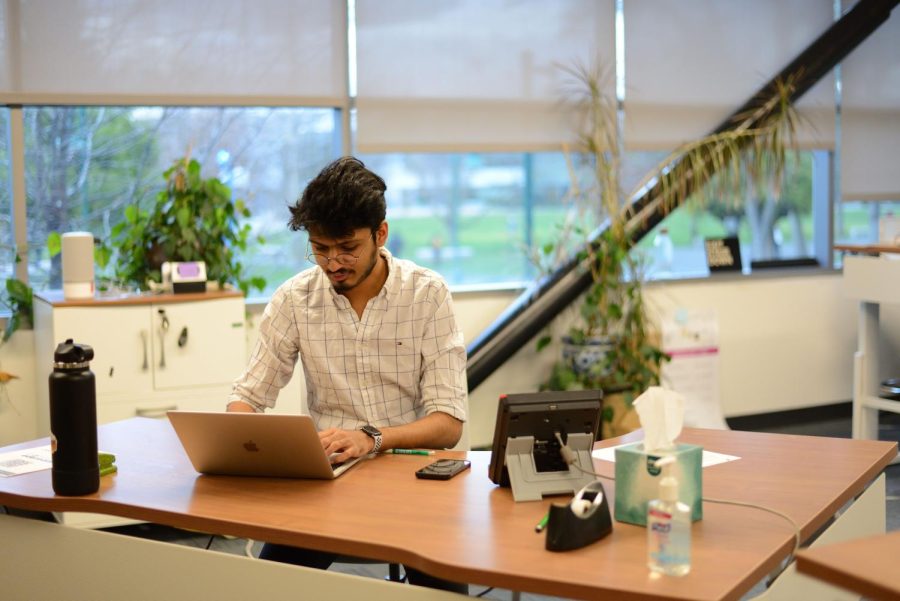Sac State sets campus internet upgrade in motion
Web connection shutdown could mean no internet for students
Computer science major Jainish Patel working at the IRT Service desk in the Academic Information Resource Center building Tuesday, March 7, 2023. The IRT Service desk answers questions and provides various tech assistance to the students and faculty at Sacramento State.
March 12, 2023
Sacramento State is upgrading the campus network starting March 17-24 and will continue throughout the spring semester in an effort to improve internet and equipment functionality, according to a campus-wide email from the Division of Information Resources and Technology.
Sac State will begin the first phase of the upgrade the weekend before spring break; March 17 from 6 p.m. – 2 a.m., March 18 from 9 a.m. – 6 p.m., March 19 from 6 a.m. – 3 p.m. and will continue from March 20–24 from 8 a.m. – 6 p.m.
Mark Hendricks, vice president and chief information officer for IRT services, said phase one will upgrade the core network and data center from 10GB to 100-200GB, increasing network capacity and performance. The second phase will focus on upgrading the access layer which allows students to connect to campus internet, he said.
Hendricks said the upgrade routine will operate on a night time schedule March 27 – April 28 from 10 p.m. – 7 a.m. to reduce impact during academic hours and will focus on upgrading equipment in campus buildings, starting with those that have the most classrooms.
“The equipment has a lifespan maintained by the vendor and we have hit that lifespan,” Hendricks said. “There is also an increasing need for higher bandwidth, more equipment and security and network protection. If the network breaks down on the campus, it is very difficult to work and teach.”
Dante Eserini, a fourth-year psychology major, said potential outages could be a concern because he relies on the internet solely to do schoolwork with his predominantly online schedule.
“Most of my classes are online and my classes that aren’t we have to do homework online for them as well,” Eserini said. “I’m guessing some of our deadlines could be pushed.”
Ted Koubiar, the Senior Director of operations and network services, said students using Canvas and SacLink accounts on campus and remotely March 17-19 could experience outages. The biggest potential impact to students and faculty could take place during the day time on Saturday, March 18.
“I don’t want to say that nobody is impacted, but a lot of these remote connections can withstand the seconds of delay,” Koubiar said. “The major impact will be Saturday morning. I would try to stay away from canvas as much as possible because it will impact everybody.”
As a student assistant for the IRT desk, fourth-year business management and information systems major Kathy Acero said being able to use these services is important.
“We would be unable to help students if we couldn’t access their information,” Acero said. “Students should communicate with professors to make sure there are extensions for students if they have any trouble with the network upgrade.”
The $1.4 million upgrade is funded by the California State University Chancellor’s Office and is part of the CSU Common Network Infrastructure, an ongoing program that refreshes campus networks every four to six years for all California State Universities.
Hendricks said he is hoping the night time upgrades will not impact students as they will occur after hours. However, if students are using campus internet 10 p.m. – 7 a.m., they could experience short outages spanning from several seconds to 15 minutes.
According to Hendricks, the upgrade is expected to be completed by the middle of May.
“Everything is so dependent on the internet and technology,” Hendricks said. “If that infrastructure fails, it is really difficult for us to do business. It is vital for us to keep these services running because it is critical in keeping the campus open.”

































































































































